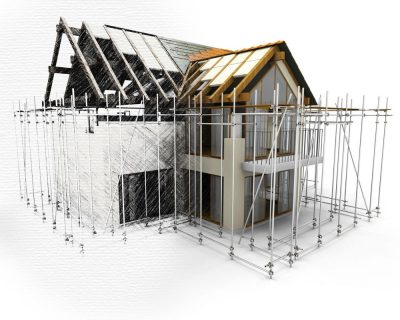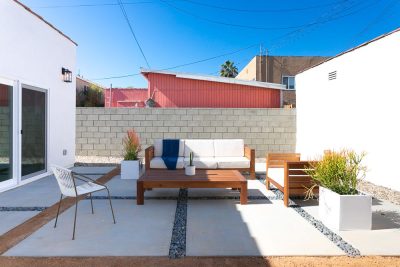
A well-maintained deck is a valuable asset to any home, offering a personal outdoor space to enjoy. When signs of wear start to appear, homeowners often face a crucial decision: repair or replace a deck. In many cases, repairing a deck is cheaper than a full replacement, especially if the structure is still sound.
Factors Influencing Repair or Replacement
Several factors influence this decision, such as the extent of the damage, the materials used, and the deck’s age. Minor repairs, like replacing a few boards or reapplying a protective finish, usually incur lower costs. Conversely, extensive damage or structural issues might necessitate a full replacement.
Assessing Deck Damage
Determining the most cost-effective solution requires assessing the current state of the deck. Professional evaluations can provide insights into the feasibility and cost of repairs versus replacement. This guide will help you make an informed decision that balances durability and budget.
Types of Deck Damage
Decks can experience multiple types of damage, such as rot, splintering, warping, and rusting. Rot often affects wooden decks in damp climates, leading to soft, crumbly wood. Splintering happens when the wood fibers start breaking apart, making the surface unsafe for barefoot walking. Warping results from moisture exposure, causing the wood to bend or twist out of shape, affecting the deck’s structural integrity. Rusting is common in metal fittings and fasteners, weakening the attachments and posing safety hazards. Understanding these types of damage is crucial for evaluating repair costs. For example, rot might necessitate replacing affected boards, while rust might just need new screws or bolts.
Inspecting for Structural Issues
Structural issues in decks often stem from poor construction, inadequate maintenance, or age-related wear and tear. Key areas to inspect include the support beams, joists, posts, and ledger boards. Regular inspections help catch these issues early. Look for sagging beams, loose fasteners, or visible cracks in posts. Use a flashlight to check for rot beneath the deck. Pay close attention to the ledger board since it’s critical for deck-to-house attachment. Detecting structural issues early can significantly influence the decision between deck repair and replacement. Often, large-scale structural problems might tilt the balance toward replacement for safety reasons.
Repairing Your Deck
When considering whether to repair a deck, it’s crucial to understand common repairs and the various factors that influence repair costs. This knowledge helps homeowners make an informed decision.
Common Deck Repairs
Depending on the specifics of the area, common repairs may require particular types of work. For example, deck repair help in Seattle typically requires replacing broken boards, fixing loose railings, and treating wood for rot or termite damage. In this region, termites can significantly affect the wood’s integrity. Another frequent issue includes repairing or replacing structural supports that have deteriorated over time. Homeowners might also need help with preventive maintenance like sealing or staining to extend the deck’s lifespan. For those in rainy cities like Seattle, additional moisture-related repairs might be necessary due to the climate.
Cost Factors for Deck Repair
Several factors affect the cost of deck repairs. The extent of the damage is a primary factor; minor fixes cost less than major structural repairs. The type of materials used is another consideration—composite materials can be more expensive than wood. Labor costs also vary by location and the complexity of the repair. In Seattle, subtle climate issues may increase labor time and cost. When budgeting, consider both immediate repair costs and potential long-term benefits, such as an increased deck lifespan.
Replacing Your Deck
Replacing a deck involves assessing its condition, determining the costs, and identifying optimal times for the replacement. This ensures safety, aesthetics, and longevity.
When to Replace
Deck replacement becomes crucial when structural issues compromise safety. Signs include loose or rotting boards, extensive mold or mildew, and rusting fasteners. Termite damage and sagging areas also indicate it’s time for a new deck. Frequent need for repairs suggests a replacement is more economical. If the deck is over 15-20 years old, upgrading to more durable materials like composite can offer long-term savings.
Cost Considerations for Deck Replacement
The cost of replacing a deck varies based on size, materials, and labor. Budget-friendly options like pressure-treated wood cost around $15 per square foot. Material upgrades, such as composite or hardwood, can increase costs to $35-$60 per square foot. Labor costs typically range between $500 and $2,000. Additional features like railings, stairs, and custom designs also affect the overall expense. Homeowners should factor in these variables when planning their budget. Economic considerations extend beyond initial expenses. Quality materials and professional installation can reduce future maintenance and repair costs, providing long-term benefits.
Making the Decision
Deciding whether to repair or replace a deck involves comparing costs and considering long-term implications.
Comparing Costs
Repairing a deck typically involves costs such as materials, labor, and potential hidden damages. For instance, replacing a few boards might cost between $150 to $500. Heavier repairs like fixing structural issues could range from $1,000 to $3,000. It’s crucial to consider that repairing might not solve underlying issues permanently. If the deck’s foundation or major parts are damaged, repairing could become a repetitive cost. Replacements often come with more extended warranties and less frequent maintenance requirements.
Long-Term Implications
Long-term implications involve the longevity and overall safety of the deck. A well-done replacement using durable materials, like composite decking, can last 25 to 30 years with minimal upkeep. In contrast, continuous repairs on an aging deck might not extend its life beyond a decade or so. Safety is another significant factor. An old, repeatedly repaired deck may pose ongoing risks like instability or rot. Replacing the deck ensures structural integrity and compliance with current building codes, reducing long-term safety concerns. Additionally, a new deck can enhance property value and aesthetics, providing a more substantial return on investment.
Conclusion
Repairing might be more economical upfront, but a replacement could offer better value over time, considering maintenance, safety, and potential resale benefits. When deciding whether to repair or replace a deck, it’s essential to weigh all factors to make the most informed choice.








